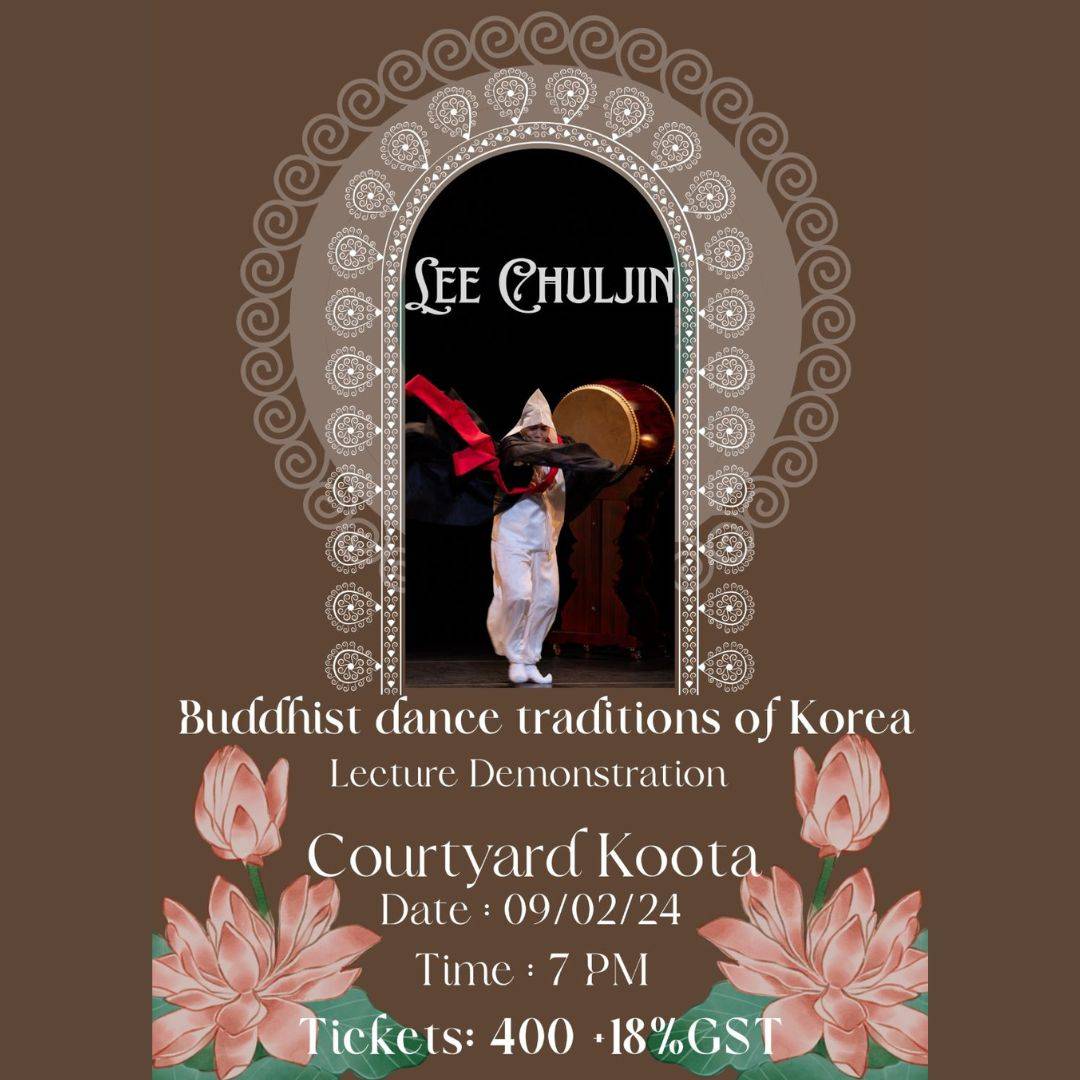Buddhist Dance Traditions Of Korea

Details
Feb 09 2024 to Feb 09 2024 7 p.m.
EVENT HAS ENDED
Price: 400 Book/Buy
Where
Courtyard Koota
Ground floor, Good Earth Tarana Good Earth Malhar, near Rajarajeswari medical college Kambipura, Bengaluru, Karnataka 560074
Event Description
Lecture Demonstration Yi (Lee) Chul-jin is a traditional Korean Buddhist dancer and art manager.He is the fourth generation of Seungmu from Han Sung-jun and third generation from Han Young- Sook. His dances are said to have unrivalled strength and ruggedness. He is also the only male dancer who plays Salpuri and Taepyeongmu which are referred to as a masterpiece. LEE CHULJIN Seungmu is one of the most representative folk dances of Korea, performed by a dancer dressed in a Buddhist monk's attire. Although commonly referred to as "monk dance,” seungmu is not a dance formally associated with Buddhist rituals or danced by a monk. Seungmu is performed by a dancer donning a white monk's robe, overlaid by a red stole. The dancer is coiffed with a peaked hat and wears white padded socks with pointed tips. Starting out with yeombul, the tempo changes successively to dodeuri, taryeong, gutgeori and jajinmort. With characteristic arm movements, like the quick pitching movement and theswishing of the sleeves creating long, fluttering trails in the air, seungmu is usually accompanied by wind instruments like piri and daeguem, haegeum, the fiddle-like string instrument, and drums (jangu and buk). This highly-sophisticated dance with a complex rhythmic structure and intricate choreographic designs gives intense expressions to life’s joys and sorrows and depicts the human struggle to transcend and sublimate themselves. Only three holders of the seungmu tradition are currently alive, including Yi Mae-bang, Yi Ae ju and Jeong Jae-man is Taepyeongmu.
Upcoming events in Courtyard Koota
We don't have any upcoming events listed for this venue.
(Venue owners / event managers, to get your event listed, reach out to us.)